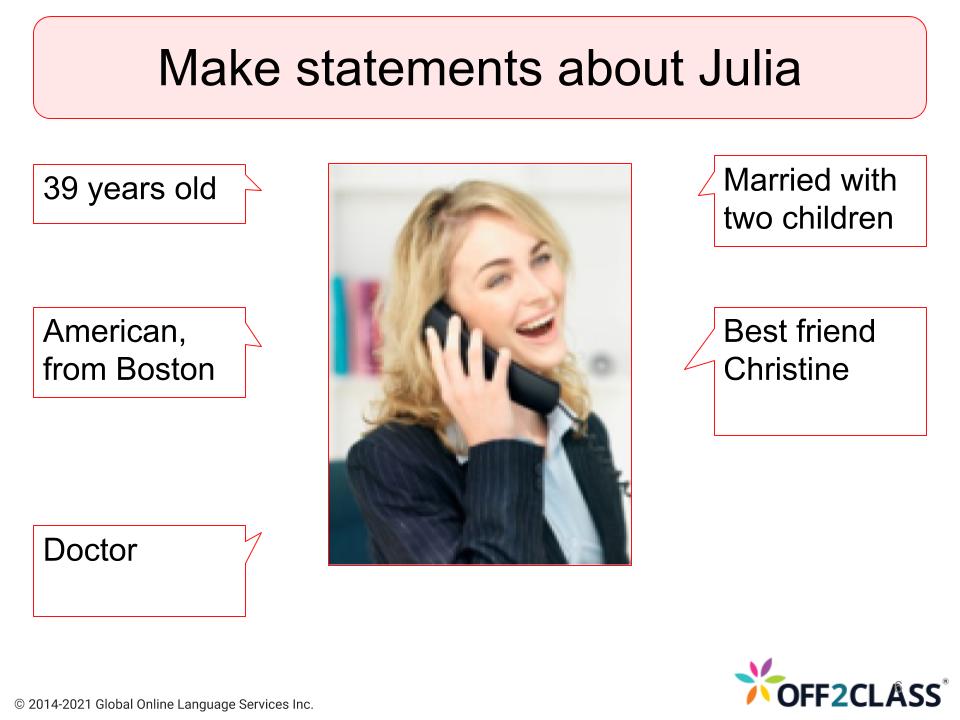5 min read
Share this post

Teaching the verb be to ESL students is exciting, but it can be a bit tricky too. Not only is it the most commonly used verb in the English language, it is irregular too! It’s important that students know this verb as soon as they start learning English and that teachers work hard to help them master it. Feeling the pressure? Don’t worry, you no longer have to! This easy-to-follow lesson plan will help you to teach the verb be with ease and impact.
Download your free Off2Class lesson plan here:
This lesson introduces your students to the positive and negative forms of the verb. By the end of the class, your students will be forming simple sentences independently. Don’t forget to congratulate your students when they complete their first full sentence in English! It’s a big deal, and they should feel accomplished. With your encouragement, they will be excited to learn more and sign up for more classes with their favorite English teacher— you!

Many teachers are apprehensive to teach verbs and verb conjugations too soon, especially if they are irregular verbs.However, it is so important for new ESL students to understand how to use the verb be. When you teach your students to use the verb be correctly, they can speak about themselves and things around them. This is incredibly useful for students to move forward in their English journey. When you finish this lesson, your students should be able to share their name, age, nationality, and perhaps even more! As a result, your students will have the needed confidence to move forward.
It is very important that ESL students are introduced to contractions earlier rather than later. Think about this—when was the last time you used the long form of a verb in everyday conversation? English speakers use contractions more often than not, especially in spoken conversation. The reason for this is because contractions are colloquial and easier to pronounce. English is ever-evolving – in some regions, people use contractions within other contractions, for example, “y’a’int”. Therefore, you would be doing your students a great disservice by not teaching contractions, so don’t skip over this part of the lesson.
If you enjoyed this ESL lesson plan download, there are 150+ more available here with a free Off2Class account. The lesson plans are designed to save you time. Also, let us know what kind of lessons you are looking for from Off2Class. More than anything, we love hearing from our teachers. So leave your general suggestions, lesson plan ideas, teaching philosophy, or anything related in the comments below. Happy teaching!
Share this post


